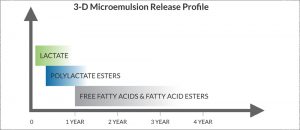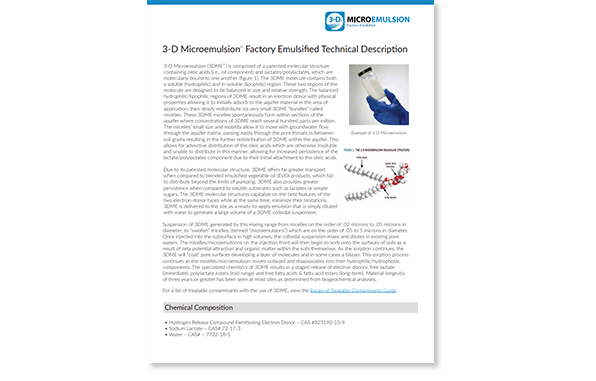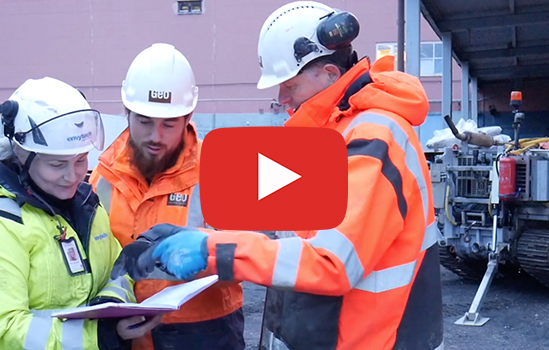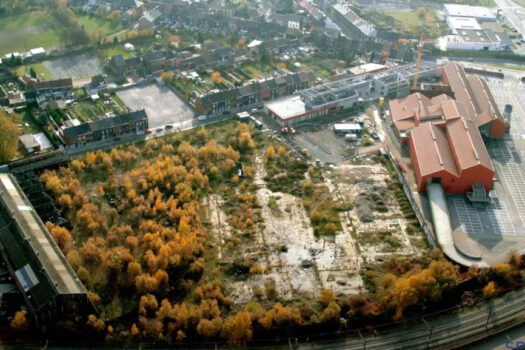
A superior engineered electron donor emulsion for the enhanced anaerobic biodegradation of chlorinated compounds
What is it?
3-D Microemulsion® is an engineered electron-donor emulsion that offers a steady and long-term source of staged-release hydrogen (in the order of 4 to 5 years from a single application) to enhance the reductive dechlorination (ERD) of chlorinated compounds. It has been optimized to distribute widely upon injection, allowing for high volume applications, reducing the number of injection points and events required onsite.
How it works
The 3-D MicroEmulsion (3DME) offers an immediate, mid-range and long-term controlled-release of lactic, organic and fatty acids for the steady production of hydrogen. The video on this page explains the process in detail.
- Stage 1 – The immediately available free lactic acid (lactate) is fermented rapidly
- Stage 2 – The controlled-release lactic acid (polylactate ester based portion) is metabolized at a more controlled rate
- Stage 3 – The free fatty acids and fatty acid esters are converted to hydrogen over a mid to long-range timeline giving 3-D Microemulsion an exceptionally long electron donor release profile

Application Methods
- Injection via direct push or into permanent wells
- Excavation applications
- Can be co-applied with BDI Plus® for a combined treatment solution of ERD and bioaugmentation, or with S-MicroZVI® for a combined treatment approach of ERD with In Situ Chemical Reduction (ISCR).
Target Contaminants
- Chlorinated Solvents
- Tetrachloroethylene (PCE)
- Trichloroethene (TCE)
- cis-1,2 Dichloroethene (DCE)
- Vinyl chloride (VC)
- Tetrachloroethane
- Trichloroethane (TCA)
- Dichloroethane (DCA)
- Carbon tetrachloride
- Chloroethane
For a complete listing of treatable contaminants please visit our Range of Treatable Contaminants Page.
Benefits
- High volume application optimizes contact with contaminants and reduces number of injection points required for treatment
- Faster and often lower cost than drawn out natural attenuation approaches
- No on-going operations and maintenance needed
- Geochemistry and anaerobic bioremediation performance parameters are well understood and easily monitored
- Proven: Successfully applied on over thousands sites worldwide
- Clean, low-cost, non-disruptive application
RESOURCES
Are you planning a remediation project?
Contact Us to explore solutions and options.
FAQs about 3-D Microemulsion
3-D Microemulsion® (3DME) is an injectable liquid material specifically designed for in situ remediation projects where the anaerobic biodegradation of chlorinated compounds through the enhanced reductive dechlorination (ERD) process is possible.
3-D Microemulsion (3DME) is an injectable liquid material which aids in the anaerobic biodegradation of chlorinated compounds. This product provides three unique electron donor materials which produce a beneficial and sequential, staged-release of each individual electron donor component. 3DME exhibits unique subsurface distribution characteristics which allow it to propagate widely within the subsurface. As a result, 3DME can treat wide-areas around an individual injection point saving both time and money.
3-D Microemulsion is right for your project if you are looking for a long-term source of staged-release hydrogen to aid in the anaerobic biodegradation of chlorinated compounds.


 Americas
Americas Europe
Europe Français
Français Deutsch
Deutsch Italiano
Italiano Español
Español



